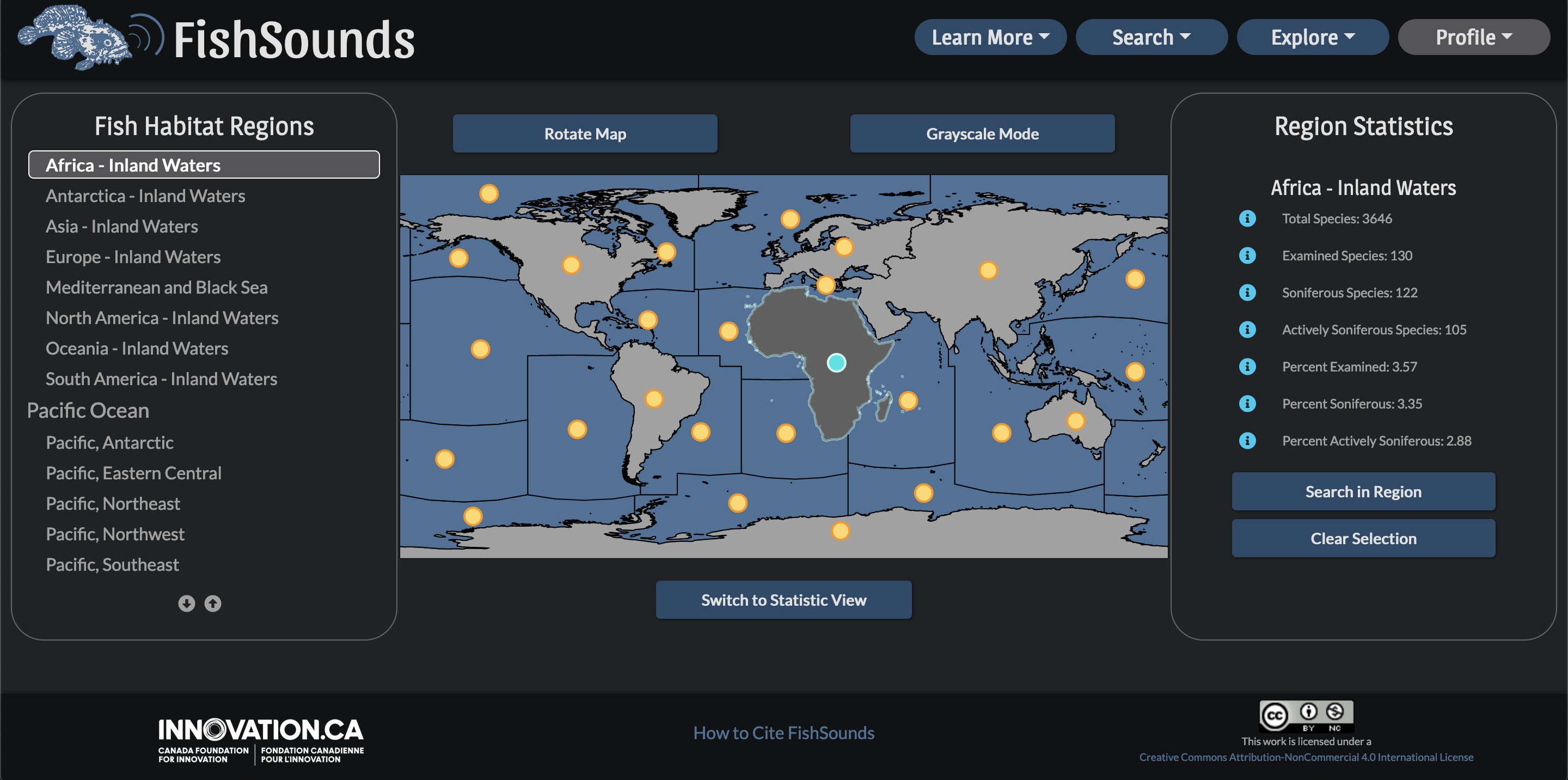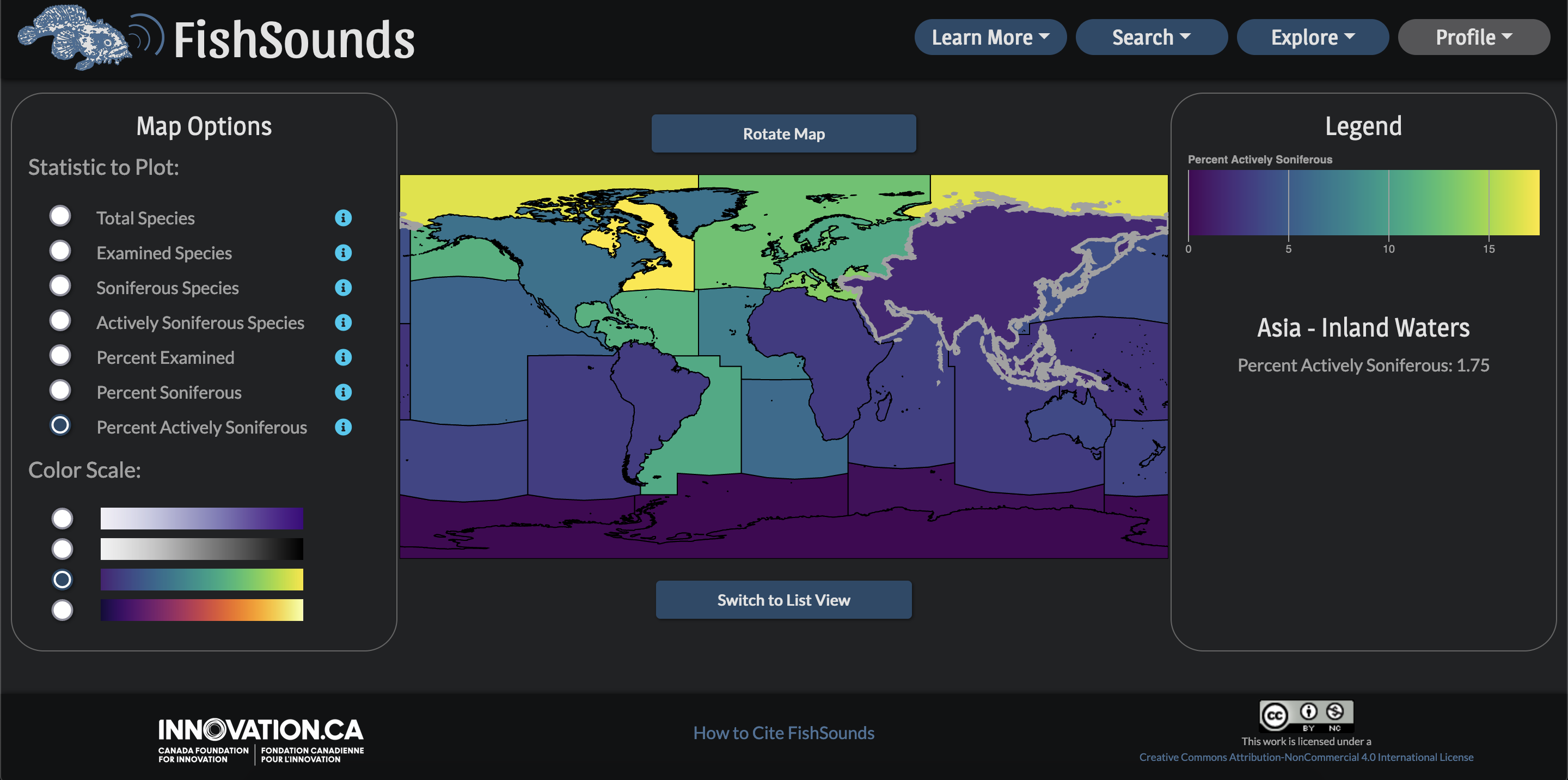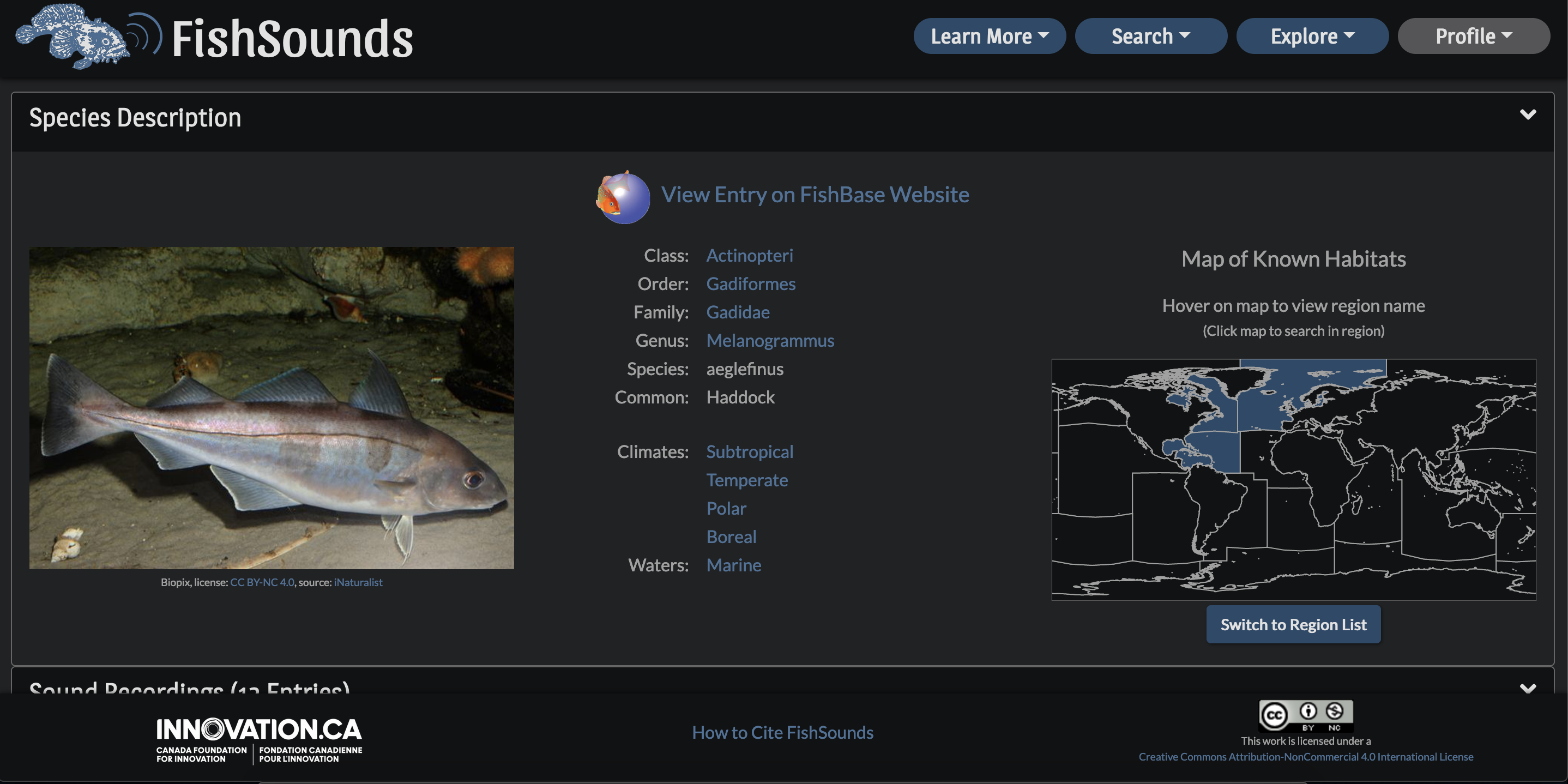Season’s greetings to our partners and users! To help ring in the new year, MERIDIAN is pleased to announce the release of a new publication, FishSounds version 1.0: a website for the compilation of fish sound production information and recordings. The article in Ecological Informatics describes the design and significance of the FishSounds website, and highlights future plans for the project.
As an end-of-year treat, we have also released the first of these new expansions in our version 2 update! The website will now switch between light and dark colour modes in line with your browser’s preference settings. Additionally, we have revised the Learn More section of the site in order to highlight some of our research and media offerings. The volumes of recordings have also been normalized, meaning no more risk of sounds being too quiet or too loud as you browse through samples.
The cornerstone of the update, however, is the map visualization, the first entry in our new Explore section. On this page you can view numerous statistics about fish species and the sounds they make depicted on a map of the Food and Agriculture Organization (FAO) regions. A list view (Figure 1) lets users easily locate a particular region of interest and pull up its values, while the statistics view (Figure 2) shows the values of each region directly on the map using colour for easier comparison.


Statistics available in the current version include:
- the total number of known fish species in each region;
- the number of species that have been studied for sound production;
- the number of species that have been found to make sound; and
- the number of species that have been found to make ‘active’ or intentional sounds (as opposed to incidental sounds while feeding, etc.).

Digital Media Specialist

Senior Data Manager
The code for the map was produced by MERIDIAN’s own Digital Media Specialist, Emma Mensah, under the supervision of the FishSounds project lead, Sarah Vela. The code was designed to be reusable and simple to deploy. The same codebase produces both the list and statistic views described above, and a new map view of each fish species’ home regions on the fish description pages (Figure 3), with different option settings applied in each case. A public repository for the map code will be available by Summer 2023 for use in other projects as part of MERIDIAN’s growing catalog of open source tools for managing, using, and sharing data.

We have had a highly productive year at MERIDIAN in 2022, including project launches, new partnerships, and successful outreach efforts. We look forward to continuing this progress in the new year, and wish a very happy, safe, and restful holiday season to all of our supporters!